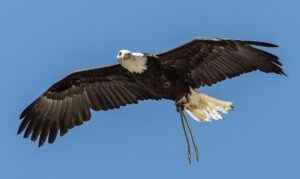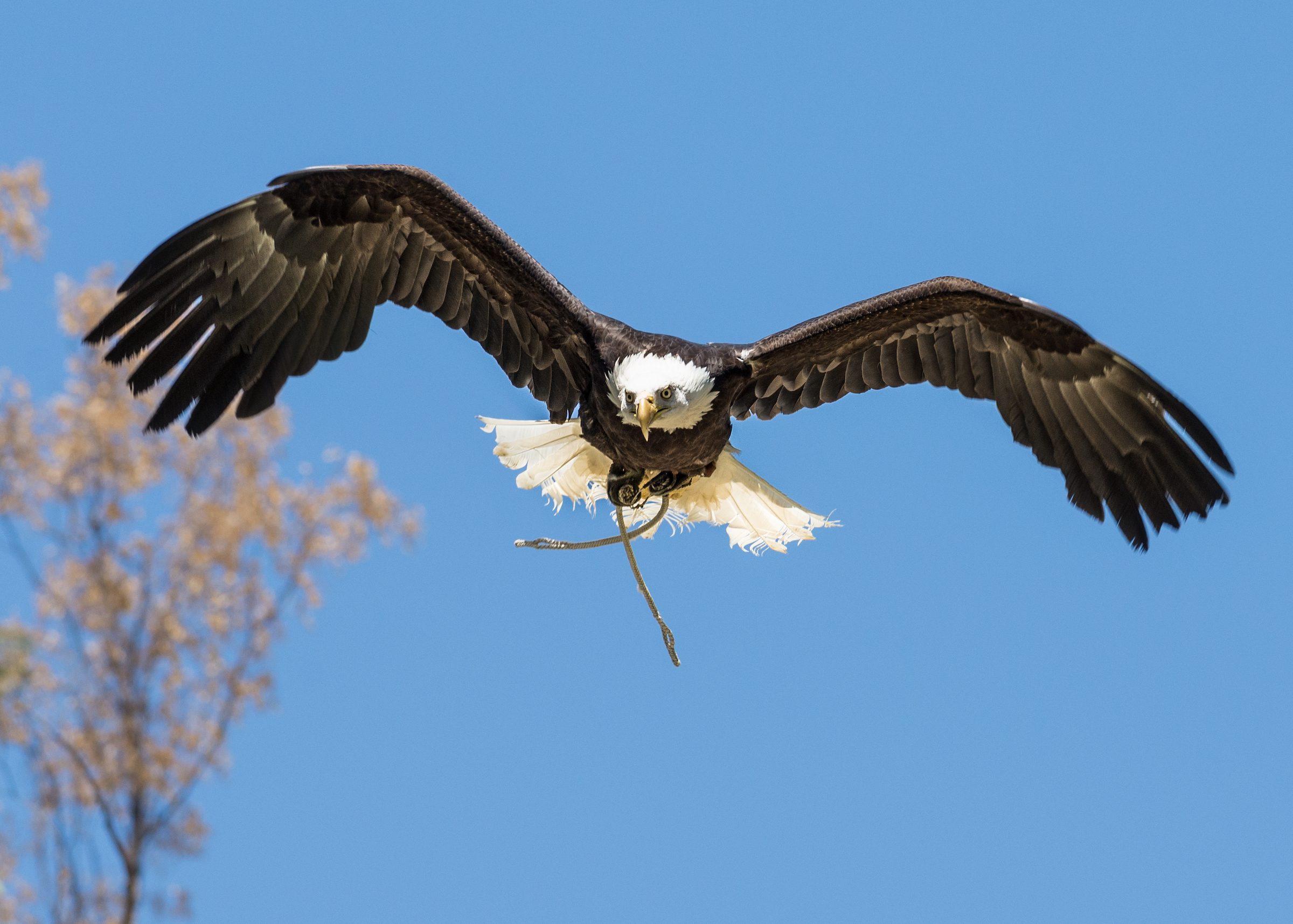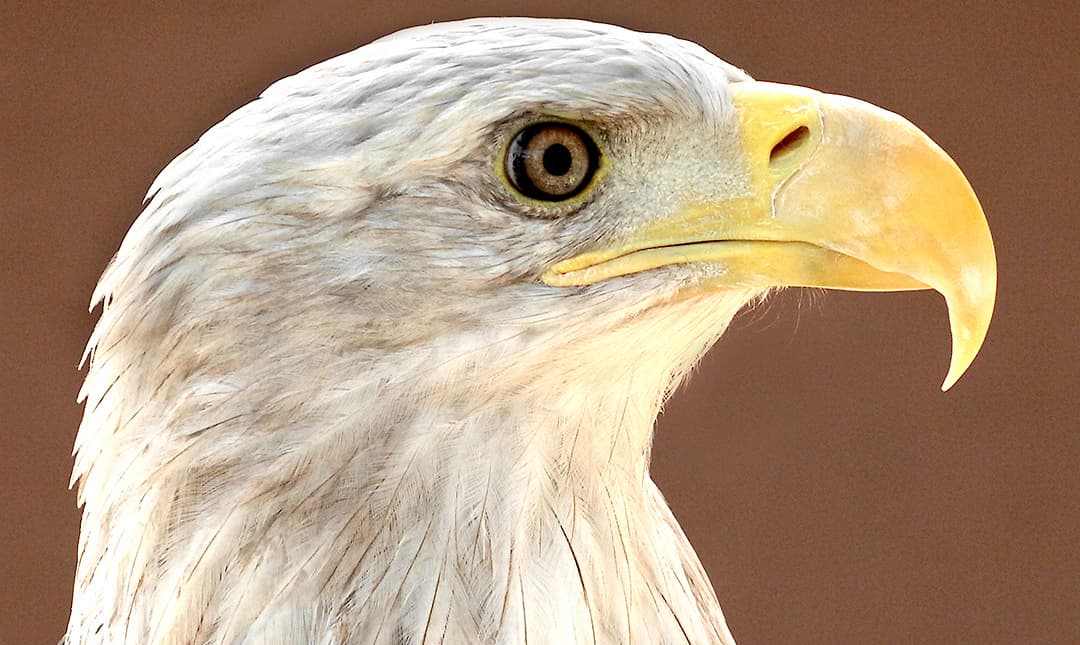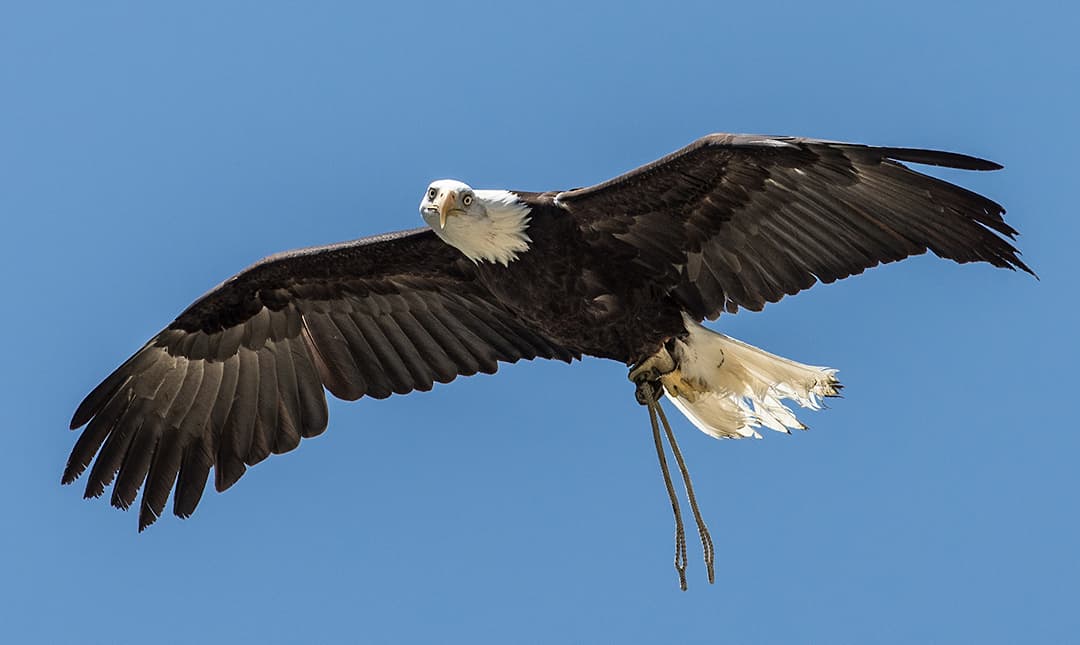About
Bald eagles are not actually bald. The name is derived from the Old English word “balde,” meaning white-headed. Believed to mate for life, bald eagles engage in a death-defying aerial courtship. They lock talons, tumble, and twist as they fall, finally separating just before they reach the ground. The pair builds a nest made of sticks in a tall tree near water where fishing is good. Each year more sticks are added to the nest. The largest nest on record was more than nine feet wide and six feet deep. Nests can weigh a ton (2,000 pounds) or more. One pair was documented as using the same nest for 34 years. A female lays one to three eggs several days apart giving the first egg that hatches the best chance of survival. Both parents incubate the eggs, which hatch in about a month. At four months of age the eaglets leave the nest. Juveniles are nomadic and can fly hundreds of miles per day. They are dark brown until about the age of five, by which time their iconic adult coloration is complete. Average flying speed is 30–40 miles per hour, but they can reach a speed of almost 100 miles per hour while diving after prey.
In 1782, the bald eagle was named our national bird. The founders wanted a North American bird that would symbolize strength, power, and independence. The eagle’s ability to soar high represents freedom. Bald eagles appear on numerous government seals, bills, and coins. At the end of the 18th century, bald eagles numbered about 100,000. By the 1960s, only about 400 mating pairs remained in the contiguous U.S. The primary cause for their decline was the pesticide DDT, which weakened eggshells, causing eggs to break or otherwise fail to hatch. The Endangered Species Acts of 1966 and 1978 helped to protect the bald eagle but the banning of DDT in 1972 was the most effective in the eagle’s recovery. As a result of these conservation efforts, bald eagle populations recovered, and the bird was removed from the Endangered Species list in June 2007.


HABITAT
Bald eagles live near rivers, lakes, and oceans. They are most abundant in Alaska and Canada, but they can be found throughout North America.
DIET
Bald eagles’ primary food is fish, which they grasp out of the water with their talons. They will also catch and consume small mammals, steal food from other raptors, and eat carrion (dead animals).
PHYSICAL CHARACTERISTICS
Females are roughly 25 percent larger than males. Body length ranges from 28 to 40 inches. Weight ranges from 6 to 15 pounds. The average wingspan for males is six feet and for females eight feet. Lifespan in the wild is from 15 to 30 years.
LOCATION WITHIN THE ZOO
You may see this bird in the World of Birds Show.



